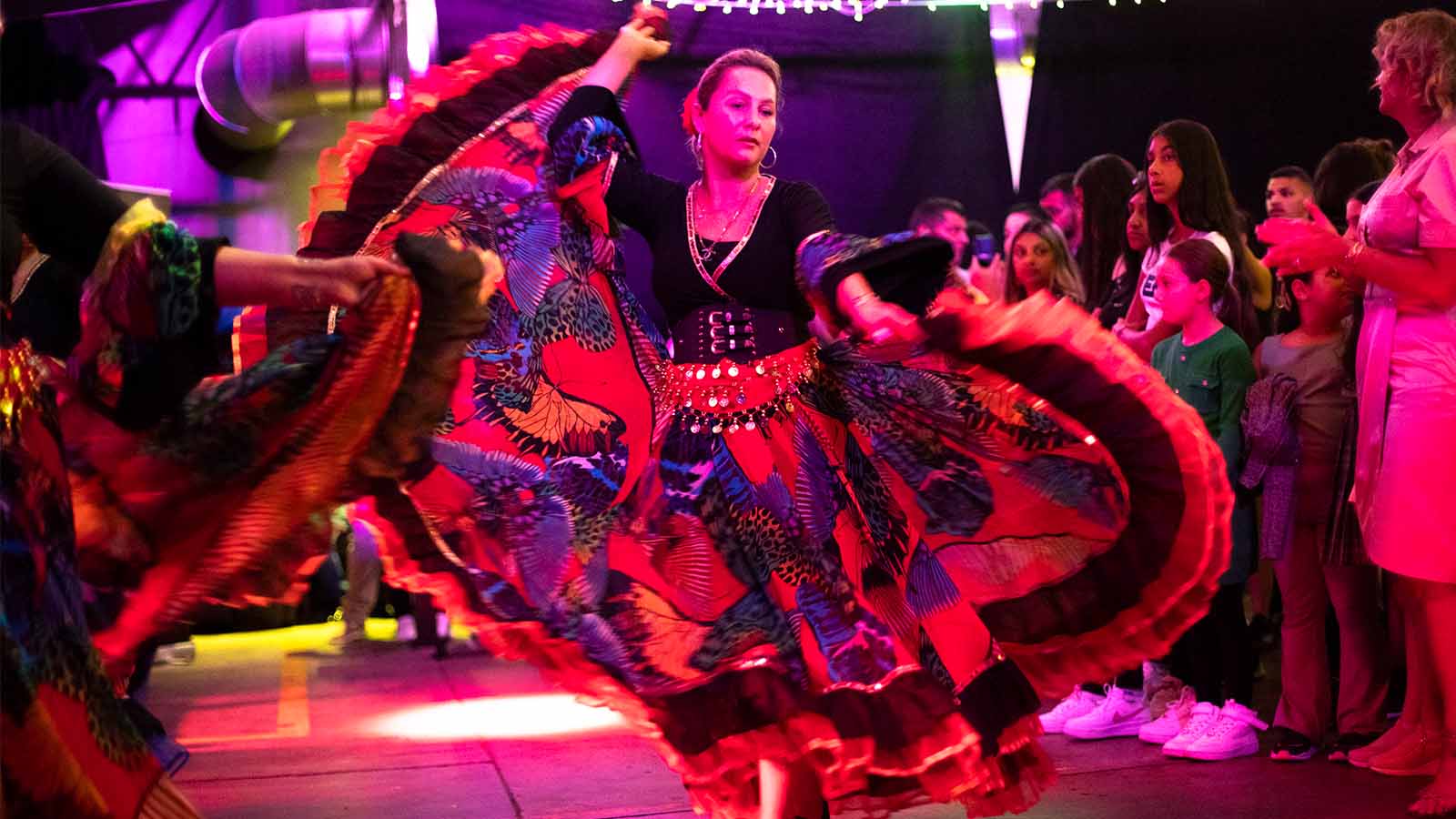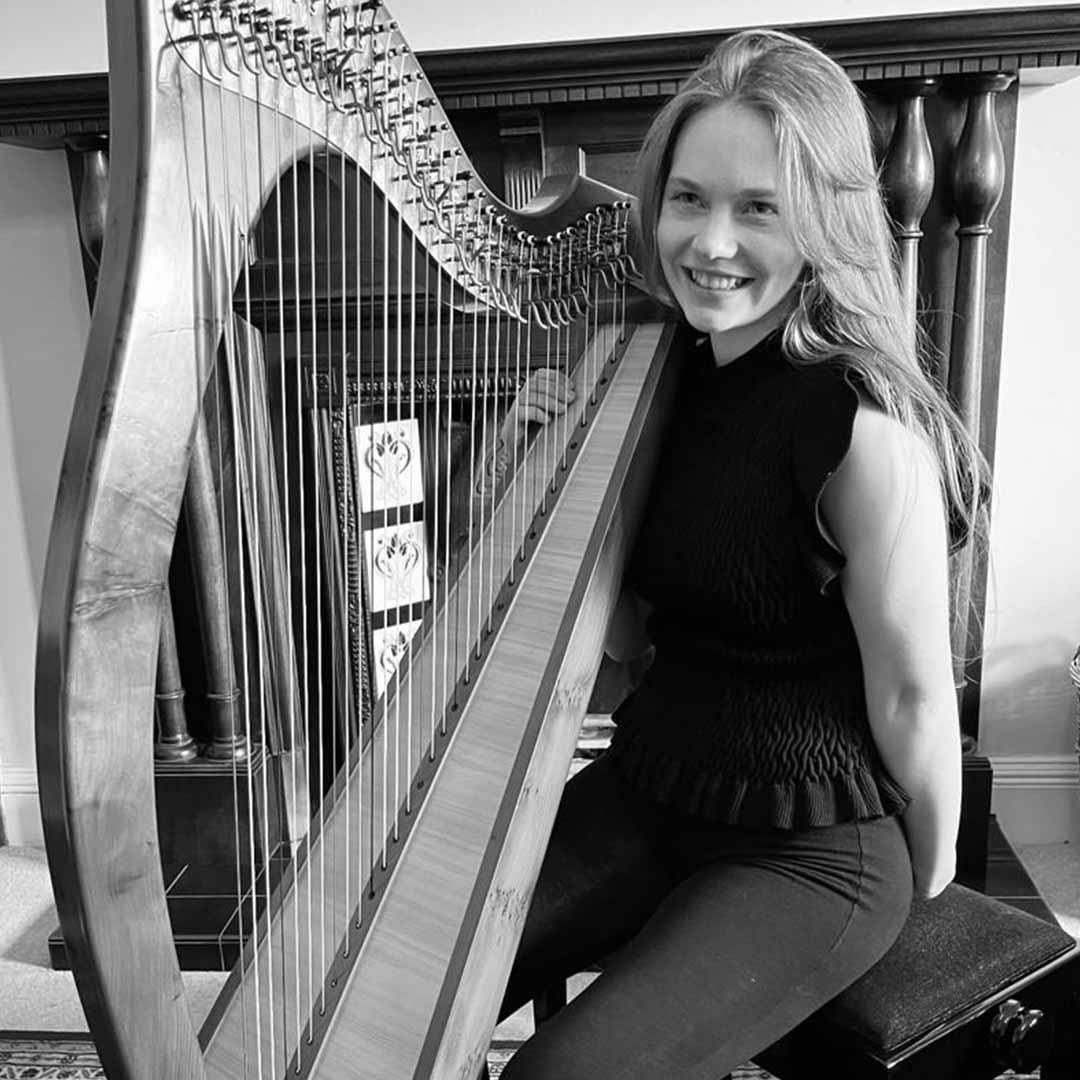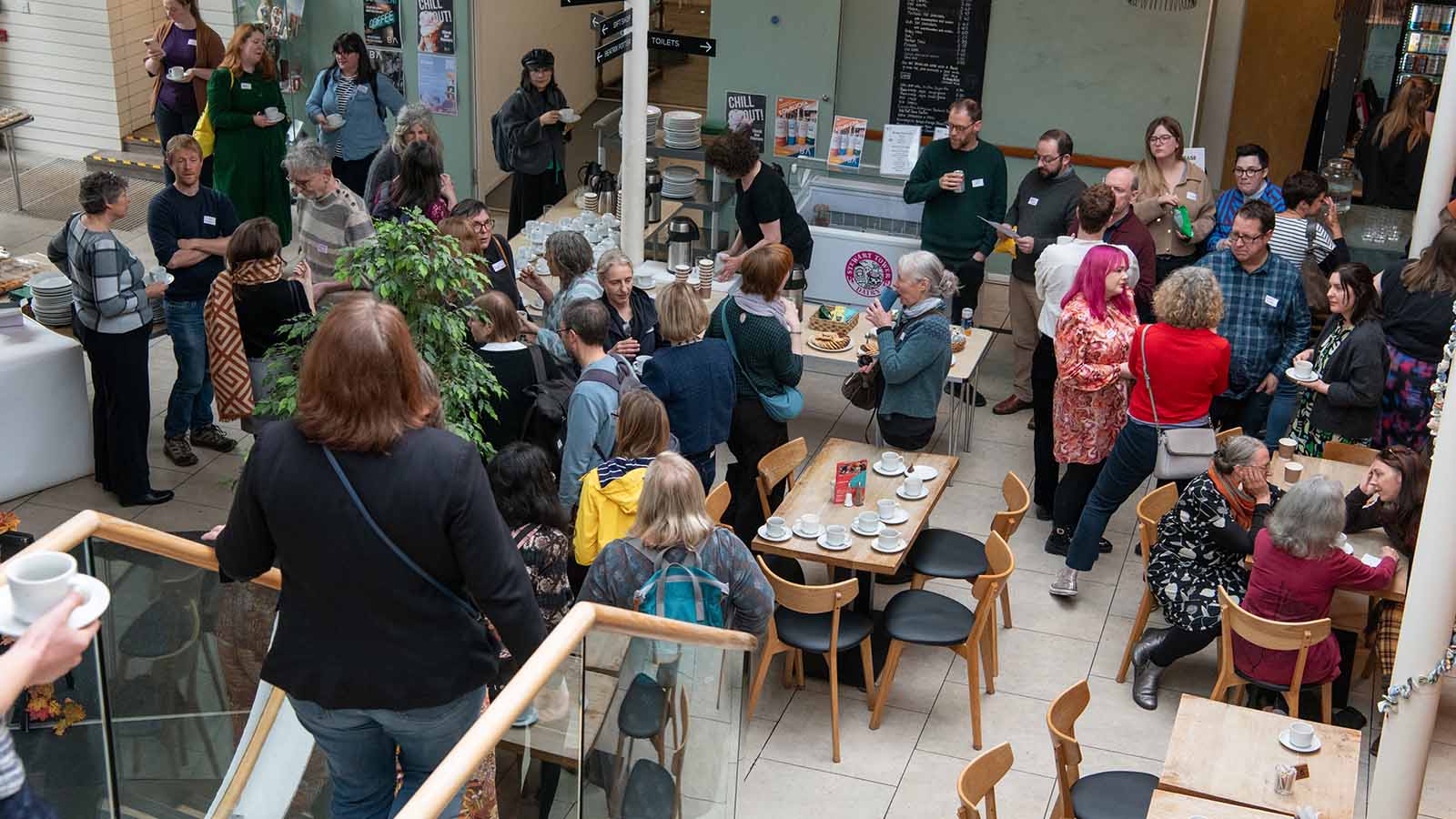Living culture and traditions embedded in Scotland’s rich and diverse communities have been recognised and celebrated at a lively, thought-provoking day-long conference.
Prompted by the UK’s June ratification of UNESCO’s Convention for the Safeguarding of the Intangible Cultural Heritage, over one hundred heritage professionals, cultural advocates, practitioners and public bodies from across Scotland and beyond gathered at Perthshire’s Birnam Arts.

Ando Glaso Collective pictured at Roma Fest, image by Harrison Reid.
Organised and funded by the ICH (Intangible Cultural Heritage) Scotland Partnership - Museums Galleries Scotland, Creative Scotland, Historic Environment Scotland, and TRACS (Traditional Arts and Culture Scotland) - the event featured a packed program aimed at inspiring unified efforts to preserve the lived traditions and practices passed down through generations in our communities.
“Intangible cultural heritage connects us to our shared traditions, languages, and everyday practices that define Scotland’s identity,” said Creative Scotland’s Catriona Hawksworth, on behalf of the ICH Partnership. “From Gaelic songs and Scots storytelling to traditional crafts like weaving and fishing, ICH encompasses the living heritage that communities pass down, often without recognising it formally as ‘heritage’ at all.
“It’s these customs that maintain our local distinctiveness and offer a rich, enduring cultural legacy for future generations. This year’s conference has been an inspiring opportunity to connect with leaders in the field and hear about innovative ways to protect, celebrate, and expand on this heritage. We look forward to seeing how this partnership will continue to honour and preserve Scotland’s intangible heritage.”
The conference, opened by David Francis, Director of the Traditional Music Forum, and Angus Robertson, Cabinet Secretary for Constitution, External Affairs and Culture, highlighted the importance of community collaboration in safeguarding Scotland’s traditions within a global framework. “Looking to the future, the Scottish Government continues to recognise the incredible potential in the inclusivity that ICH provides. By valuing each other’s traditions, cultures, and stories, we all have much to gain,” stated Mr Robertson in his opening address.
Now ratified by over 180 countries, the UNESCO Convention emphasises the preservation of living cultural expressions - oral traditions, performing arts, social practices and traditional craftsmanship - that are vital to communities’ cultural identities. Now that the Convention is in force, Scotland is poised to benefit from UNESCO’s global network, best practices and frameworks for protecting ICH.
Keynote speaker Pieter van Rooij from the Dutch Centre for ICH provided an inspiring look at how the Netherlands has implemented the UNESCO Convention. By sharing examples of government-supported ICH initiatives and policies, he offered valuable lessons for Scotland’s own journey forwards, with insights underscoring how UNESCO’s framework can help nations protect heritage at risk, while also encouraging cultural inclusivity and resilience.
Scotland has long led ICH efforts within the UK, building on early folklore collectors’ documentation of Scottish oral traditions, tales and songs. These efforts have laid the foundation for today’s preservation initiatives and have cemented ICH as a central part of Scotland’s national identity.

Mairi Callan, image by Margaret Callan.
The first session, Who’s Working on Intangible Cultural Heritage in Scotland, highlighted some of the most inspiring ICH projects in the country. Gaelic Bàrdachd Màiri Callan presented Slighe Fonn na Bàrdachd (The Musical Journey of Verse: From Silent Page to the Melodious Voices of the People), a project reviving Gaelic verse through new musical compositions. Janos Lang and Simon Gall’s Ando Glaso Roma Fest in Glasgow celebrated Roma culture through traditional music, dance, and dress, highlighting the richness of Scotland’s multicultural heritage.
The Findhorn Watershed Initiative, spearheaded by Raghnaid Sandilands and Mairi McFadyen, exemplified regional collaboration with the development of the River Findhorn Charter, honouring local heritage enriched by oral histories and community voices, while folklorist Erin Farley spoke about South Queensferry's calendar custom of the Burry Man, emphasising its importance to the community which has maintained it.
The second session, Opportunities and Challenges Around ICH in Scotland, examined policy, sustainability and support for ICH. Joanne Orr, CEO of an accredited NGO and expert in cultural policy, discussed the potential impact of ratification on public policy and funding for ICH; while TRACS (Traditional Arts and Culture Scotland) Chief Executive Steve Byrne’s presentation of Really Interesting Objects Traditional Crafts Report (commissioned by TRACS, Museums Galleries Scotland, Creative Scotland and Craft Scotland) underscored the social and economic challenges facing Scotland’s traditional craft makers.

A break for lunch at the 2024 ICH conference. Image courtesy of Historic Environment Scotland.
Local authority representatives, including Judith Hewitt from Dumfries and Galloway Council, highlighted councils’ roles in supporting ICH at a grassroots level. Johnnie Anderson presented the findings from Historic Environment Scotland’s ICH at Risk project, shedding light on Scotland’s endangered traditions and skills, and underscoring the pressing need for their conservation.
Following the day’s sessions, local performers and guests gathered for a cèilidh that celebrated Scotland’s oral traditions through music, folklore, and poetry.
The ICH Scotland Partnership closed the conference by reaffirming its commitment to advancing collaboration across Scotland in support of intangible cultural heritage, anticipating an exciting future for Scotland’s living heritage, enriched by new initiatives, shared resources, and global perspectives.
Background
The ICH Scotland Partnership is a collaboration between Museums Galleries Scotland, Creative Scotland, Historic Environment Scotland, and TRACS (Traditional Arts and Culture Scotland). Since 2020, the partnership has produced a report mapping the current state of ICH in Scotland and has produced events helping communities to engage with and share their own ICH, while encouraging the ratification of the 2003 UNESCO Convention for the safeguarding of Intangible Cultural Heritage alongside the Scottish Government.
Creative Scotland is the public body that supports culture and creativity across all parts of Scotland, distributing funding provided by the Scottish Government and The National Lottery. Further information at creativescotland.com. Follow us on Facebook, LinkedIn, and Instagram. Learn more about the value of art and creativity in Scotland and join in at www.ourcreativevoice.scot
Media Contact
Olivia Carr, Media Relations & PR Officer (Interim)
[email protected] / [email protected]
+44 (0)7970 962 322
